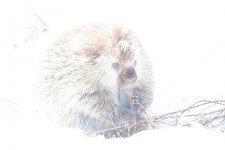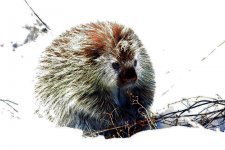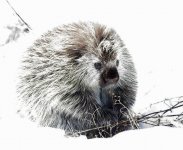nikovich
Well-known member
Hi guys, saw this wonderful Porcupine yesterday, and thought I'd try to actually get some use of the built in flash on my rebel xt , with these disasterous results  This was all done on the fly, while the little critter was still sat there so I had to be real quick incase it charged me.
This was all done on the fly, while the little critter was still sat there so I had to be real quick incase it charged me.
Suffice to say I over-exposed it slightly ( bit of an understatement )
I did get some nice photos without the Flash , but was hoping to get more of a catch-light in the eye.
So, looking at the Exif info , what settings should I have used ? It was a really really bright day , with the Sun very high in the sky.
Thanks for any help . I've got to get to grips with flash seeing as I've just ordered a 430Ex .
Nick
Suffice to say I over-exposed it slightly ( bit of an understatement )
I did get some nice photos without the Flash , but was hoping to get more of a catch-light in the eye.
So, looking at the Exif info , what settings should I have used ? It was a really really bright day , with the Sun very high in the sky.
Thanks for any help . I've got to get to grips with flash seeing as I've just ordered a 430Ex .
Nick






